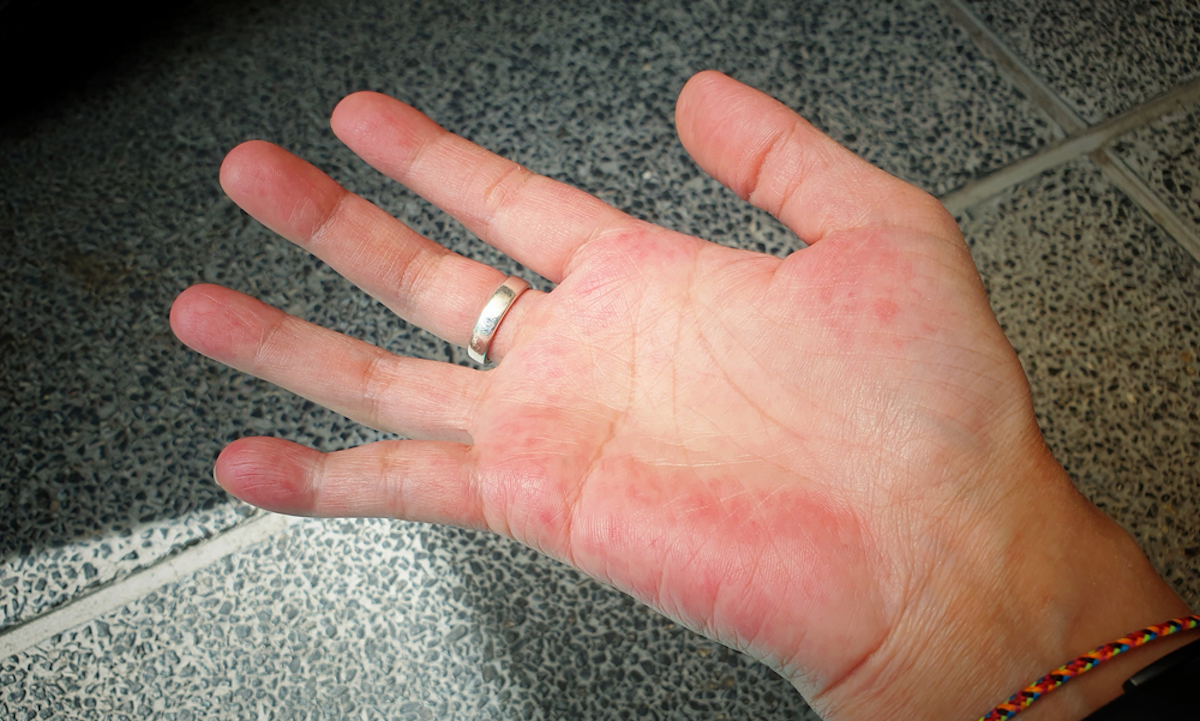Eczema – Atopic Dermatitis
As every skin disorder is different, has different kinds of symptoms, has a different cause, and affects different kinds of body parts, it is wise to describe and explain the skin rashes – named on the previous page – one by one. The first and most common one is eczema – also known as atopic dermatitis. Eczema affects mostly bending areas, like the fingers, hands, (insides of the) elbows, and (the insides of the) knees. Its cause is unknown, but most studies show that the skin disorder is caused by genetics and people with a (family) history of allergies.

Eczema can be triggered by stress, anxiety, climate, allergies, wrong skincare products, make-up, etc. Symptoms of eczema include itchy, red, and dry skin. There are also many cases where small blisters appear on the irritated skin or the skin becomes infected. Eczema around the eyes can be recognized by dark skin around the eyes.
Cutaneous Lupus
Cutaneous Lupus, better known as skin Lupus or just Lupus, is an autoimmune disease. This means that your immune system attacks certain body tissues, like your skin or organs. In this case, the body’s immune system attacks the skin. Unfortunately, is the cause of this autoimmune disease still unknown nor is there a cure? Skin lupus, however, can be controlled by various treatments, such as medication and lifestyle changes. This includes staying out of the sun as much as possible.
You can recognize this skin disease by its distinctive red, scaly spots on the skin. Often they are circles, for example as big as a coin or sometimes a disk. Typically, the spots are surrounded by an even darker red border. In addition, 50% of people suffering from Lupus have the well-known butterfly rash, which is a rash that runs from one cheek over the nose to the other cheek. Cutaneous Lupus can appear everywhere on the body, but most likely on sun-exposed areas – like the hands, arms, and legs.
Shingles
Shingles are a skin disorder that is fairly simple to recognize once you know what to look for. It typically begins with strange stimuli, such as a burning/ itching/tingling sensation, on the affected area of the body. Which is mostly the chest, back, or abdomen, but can also appear on other parts of the body.
Within 1 or 2 days, there is then a rash on that same spot that starts as blisters and by day 3 or 4 has become open sores. Shingles are a very painful skin disorder. People suffering from this describe it as a stabbing and burning pain, which can begin a few days before the rash is visible, and remains until the rash is gone. Other symptoms of shingles are fever, malaise, and headaches.
Hives
Hives are just like shingles, a very painful skin disorder. Typically, the skin rash looks like welts and can itch, burn, and/or sting. The size of hives can vary, sometimes they are small, and the other time they are bigger or even join together in one big welt. They can appear on your whole body and stay there for a few minutes or a few days, this varies as well. The skin disorder appears when something – like extreme temperatures, infections, and foods – causes high levels of histamine. Treatment for hives is anti-itch medication or applying cold compresses on the affected areas. Continue reading on the next page to find out how to recognize skin disorders like scabies and rosacea.

